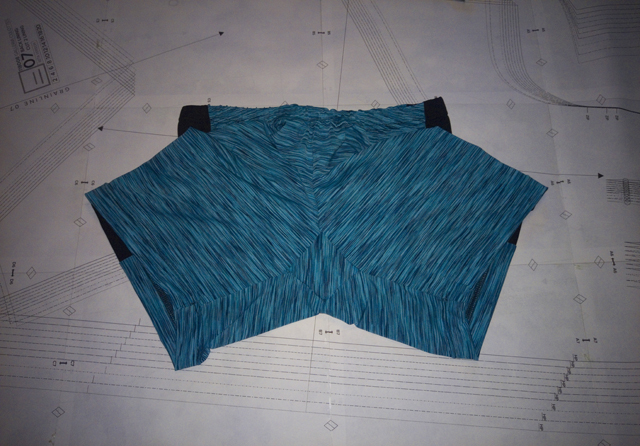When I finished muslining McCall’s 7324, I had about as much leftover fabric as I’d used for the top. And since my muslin wasn’t wearable, I thought I’d have another go at some kind of top to make up for it. Despite the fact that I myself professed this navy fabric closer to a quilting cotton than to the shirting it was marketed as, I foolishly latched onto the idea of making a ruffle top following this Megan Nielsen tutorial (and brought to my attention by this Peneloping blog post).
It was a hilariously abject failure. For starters, I didn’t actually have enough fabric, which makes for some sad not-really-ruffles. The fabric was entirely too stiff, so it hung like a paper bag. The cheerful yellow bias tape I used around the armholes was also too stiff and didn’t want to stay rolled to the inside, and even though it was mostly hidden it managed to tip the entire thing from playful and cute into clownish territory in my mind.
So…I cut both the failed top and the muslin apart again and made pajama shorts.

I used Simplicity 1520, the same pattern as my tartan pajama pants, along with my trusty pocket template. There’s something deeply satisfying about a well-sewn pocket, even a very simple in-seam one.

I incorporated all of the after-the-fact modifications I made to my flannel pants, which made this relatively quick and simple to whip up. I have vague recollections of unnecessarily complicating the sewing of the elastic/drawstring casing, but I’m positive it was for no good reason whatsoever, so I won’t try to recall what I did or didn’t do here.
Everything was sewn on my regular sewing machine, and then the edges were finished on my serger. There’s both an elastic and a drawstring at the waist; the drawstring is just a strip of the main fabric with the raw edges tucked in, sewn flat, and then knotted at each end. The elastic and drawstring were threaded through buttonholes (reinforced with interfacing, which you can see peeking out in the shot below) in the casing.

The finished pajama shorts fit just fine, but I haven’t actually worn them yet. We keep the house too cold in the late fall, winter, and early spring for shorts (for me, at least), and even in the warmer months you’re more likely to find me wearing loose, lightweight pants than shorts indoors. If I don’t find myself reaching for these come summer, at least they’re made well enough that I wouldn’t feel guilty about donating them.




